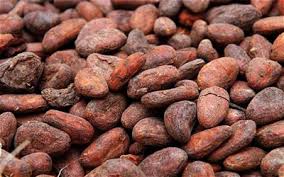Friday, 11 September 2015 17:05
 JAKARTA: Indonesia’s cocoa bean output is expected to be steady this year and rise at least 5 percent in 2016, an industry group said, as a government scheme to boost production helps offset any damage to crops from the current El Nino-linked dry weather.
JAKARTA: Indonesia’s cocoa bean output is expected to be steady this year and rise at least 5 percent in 2016, an industry group said, as a government scheme to boost production helps offset any damage to crops from the current El Nino-linked dry weather.
Higher output by the world’s No.3 cocoa producer, at a time when global oversupply is expected to balloon to a five-year high, could bring down benchmark bean prices from their recent seven-week peak.
Indonesia is seen producing 400,000 tonnes of cocoa this year, unchanged from 2014, with output expected to rise 5-10 percent in 2016, Piter Jasman, chairman of the Indonesian Cocoa
Industries Association, said on Friday.
“In 2009, the government extended help to new areas, which are now starting to produce,” said Jasman, whose group represents exporters and traders.
Indonesia has struggled to increase cocoa output as its ageing trees, most of them planted in the 1980s, are vulnerable to disease that is hard to stamp out because of a vast network of smallholders.
To combat this, it launched a $ 350 million scheme in 2009 with an aim to boost output to more than 600,000 tonnes in five years. In 2008/09, Indonesian production was at 490,000 tonnes, according to the International Cocoa Organization (ICCO).
While output is still lower than six years ago, pegged at 350,000 tonnes for 2014/15 by the ICCO; Jasman sees it improving as an estimated 80 percent of the state scheme has proved a success, especially in areas of Bali, Sumatra and Sulawesi.
Also, late last year the government announced a plan to invest almost $ 100 million on distributing seedlings and increasing cocoa productivity.
The one worry is the ongoing dryness linked to El Nino. The weather event is expected to be moderate in the country from July to November, and strengthen from September to December.
Jasman, also a commissioner at unlisted Indonesian grinder BT Cocoa, however shrugged off El Nino worries, saying cocoa trees are “not really affected by El Nino”.
Speaking of Indonesian grinders, he said they currently need 500,000 tonnes of beans each year and meet a 100,000-tonne shortfall through imports from Ghana and Ivory Coast.
Indonesia imposes a monthly export tax on cocoa, currently at 10 percent, to ensure domestic supplies. Jasman said his group is lobbying the government to set the tax at 15 percent.
Indonesia’s cocoa processing industry has changed in recent years as commodity giants such as Cargill, Olam International Ltd and Barry Callebaut enter the market, pushing out smaller, local players.





























